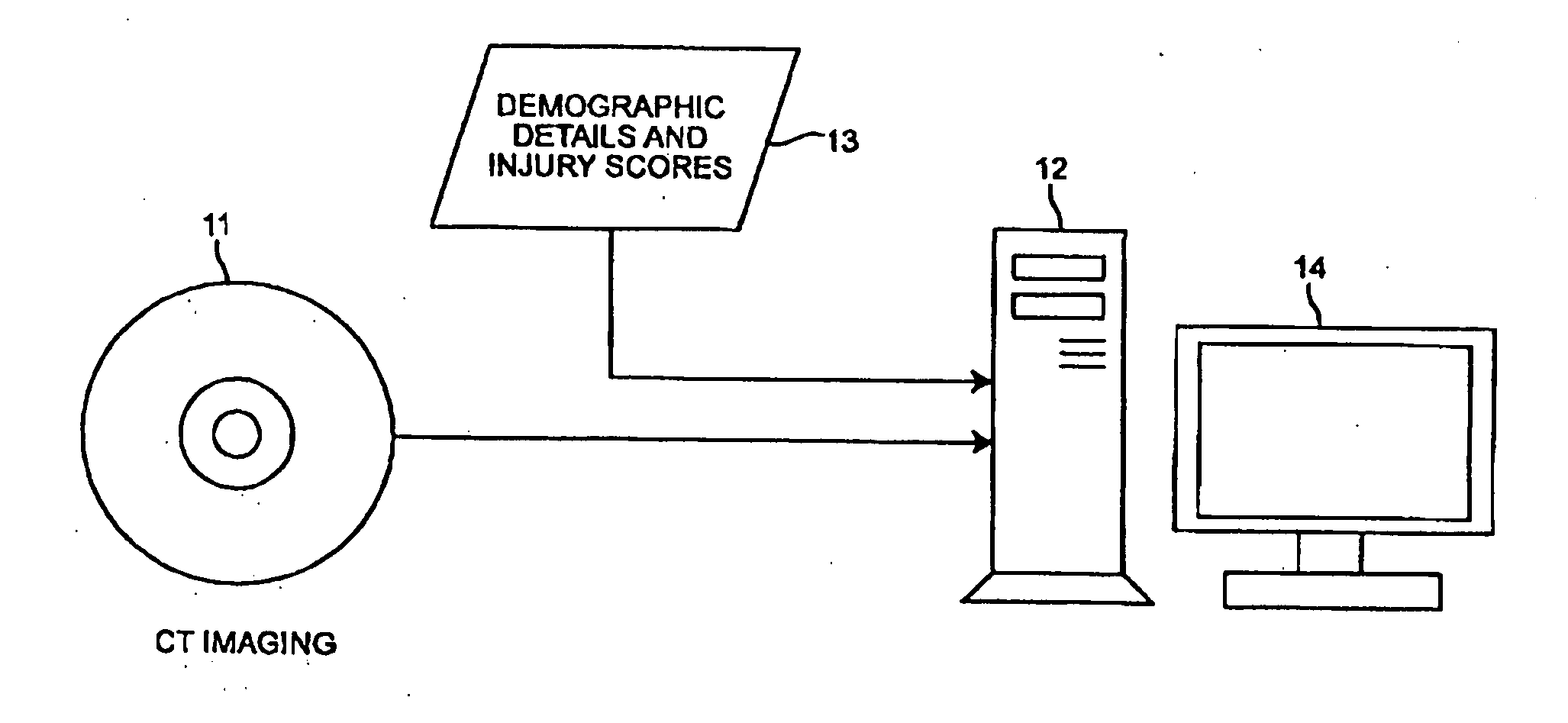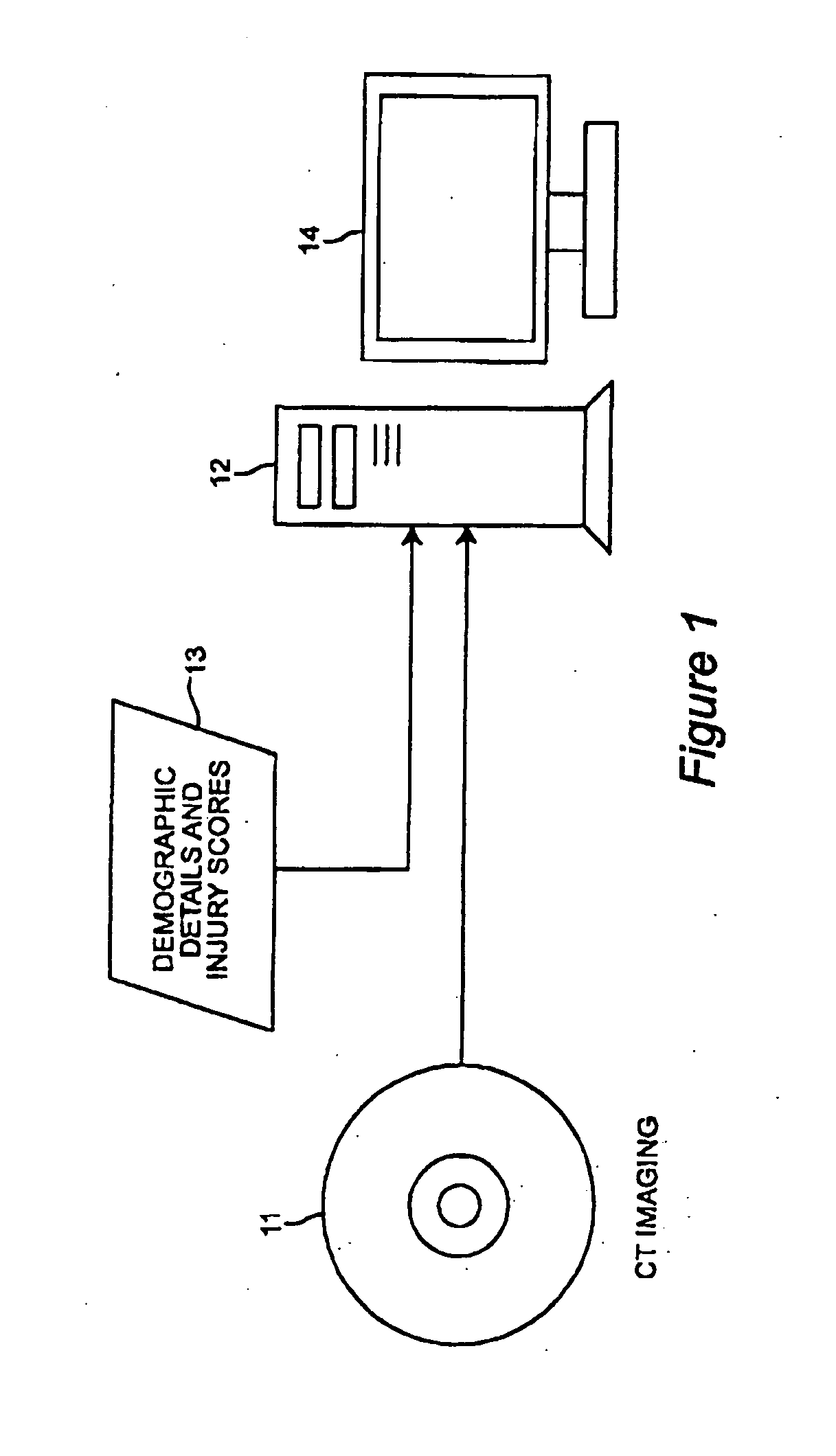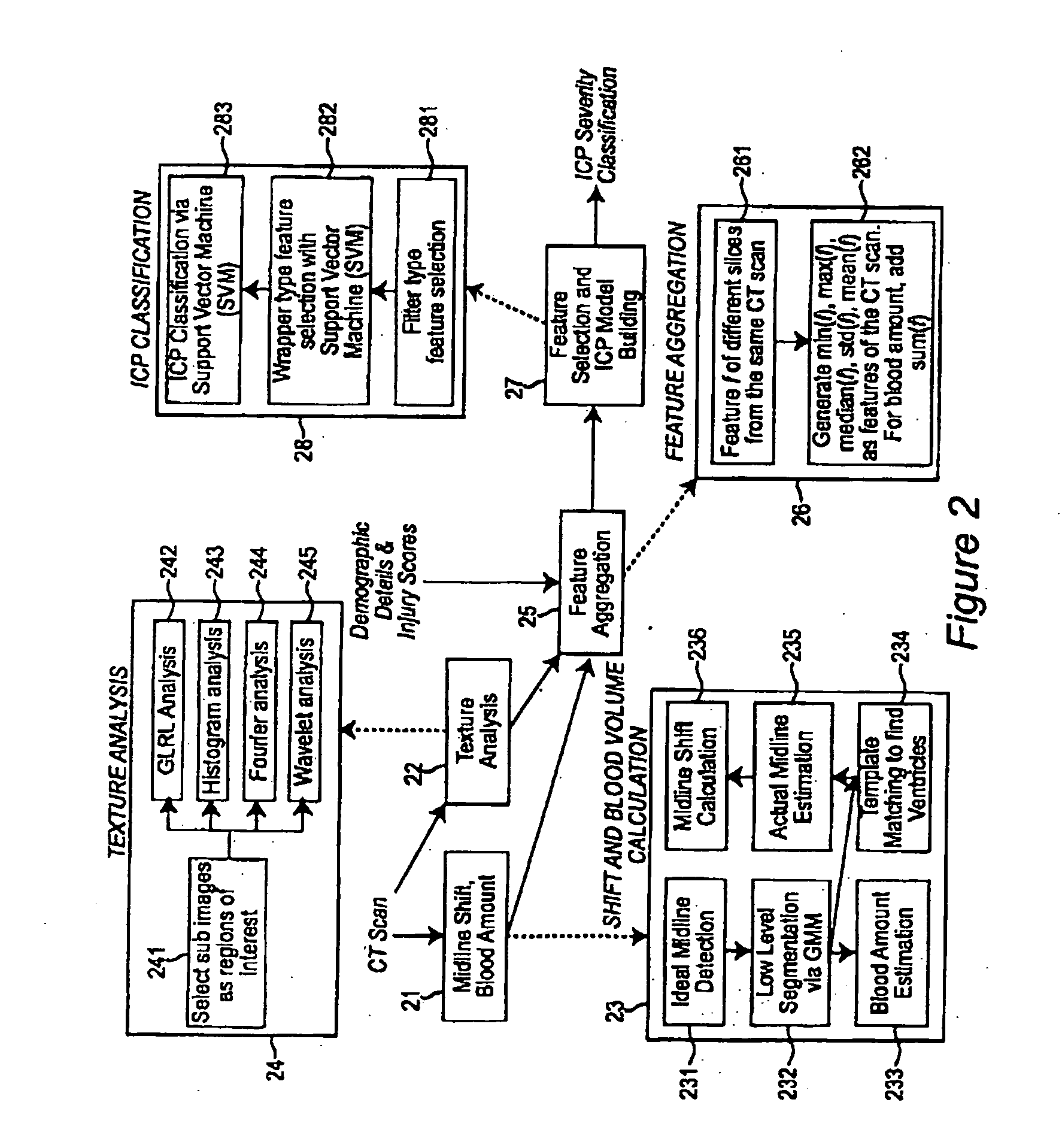Automated Measurement of Brain Injury Indices Using Brain CT Images, Injury Data, and Machine Learning
- Summary
- Abstract
- Description
- Claims
- Application Information
AI Technical Summary
Benefits of technology
Problems solved by technology
Method used
Image
Examples
Embodiment Construction
[0030]In clinic settings, the midline shift is widely accepted as an indicator of elevated intracranial pressure (ICP). However, the relation applies only when the midline shift is obvious enough which indicates very high ICP and thus is usually too late for timely treatment. An aim of the present invention is to reveal the relation of ICP with all levels of midline shift as well as other information, such as brain tissue texture in CT images, hematoma volume and pertinent demographic and injury data. The final result is an accurate prediction of ICP to assist medical decisions.
[0031]An embodiment of the invention is described in terms of a decision-support system on which the methods of the invention maybe implemented. The system is composed of various signal processing components, imaging processing components, databases and computational interfaces that one of ordinary skill in the computational and signal processing arts will he familiar with. The methods of the invention are de...
PUM
 Login to View More
Login to View More Abstract
Description
Claims
Application Information
 Login to View More
Login to View More - Generate Ideas
- Intellectual Property
- Life Sciences
- Materials
- Tech Scout
- Unparalleled Data Quality
- Higher Quality Content
- 60% Fewer Hallucinations
Browse by: Latest US Patents, China's latest patents, Technical Efficacy Thesaurus, Application Domain, Technology Topic, Popular Technical Reports.
© 2025 PatSnap. All rights reserved.Legal|Privacy policy|Modern Slavery Act Transparency Statement|Sitemap|About US| Contact US: help@patsnap.com



